Exclusive! Dahmer – Monster: The Jeffrey Dahmer Story’s assistant production designer Rhea Solanki mixes tech and art to tell stories with social message
The Indian-Canadian production designer is currently working on an upcoming OTT series with a team in Mumbai
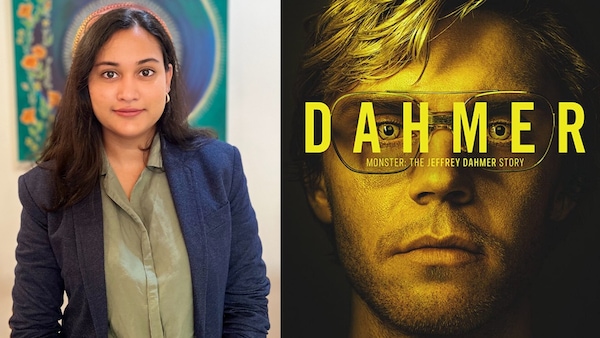
Rhea Solanki; the poster of Dahmer – Monster: The Jeffrey Dahmer Story
Last Updated: 06.37 AM, Mar 12, 2023
It’s not every day that one gets to see women taking interest in technology and the arts in equal measures. But when Indian-Canadian production designer Rhea Solanki mixes the aesthetics of both, it’s usually for a film or a series with a social message.
Be it her short film We Were Meant To (which premiered at the Sundance Film Festival), Amina (which had its first show at Tribeca Film Festival) or her work in Dahmer – Monster: The Jeffrey Dahmer Story (a true crime anthology series, created by Ryan Murphy and Ian Brennan, streaming Netflix), Rhea is constantly making an effort to create an inclusive world through social message-focused projects that include Hysterical (2021) and Harana.
Cut to her latest work, the young production designer is now collaborating with a production house in Mumbai to work with them on a yet-to-be-titled OTT series. In an exclusive conversation with OTTplay, Rhea talks about how being an immigrant and a person of colour influences her work, her take on OTT and short-format projects and more. Excerpts:
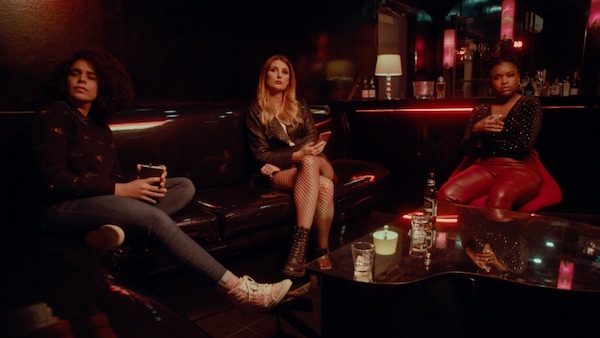
1. What inspired you to focus on social message-focused projects in cinema?
Although my roots are in India, I have lived in Canada for most of my life. So, it was sometimes hard for me to relate with my cousins back in India. It was through films and television that I was kind of able to connect with the two very different cultures. So from an early age, I realised how powerful the medium of cinema is. And then now, seeing the way the world currently is, I think it’s become more obvious that we need more empathy. And storytelling, filmmaking is really a very potent form of empathy, because you get immersed in the story of another person, and you really understand the journey of a character.
Even when you look at a TV show like Dahmer – Monster: The Jeffrey Dahmer Story, people don’t want to feel empathy for such a character. Right? He’s a serial killer; he’s awful; he’s done terrible things. But when you watch his story, you can connect it, and you’re like, oh, so many awful things happened in his childhood, and you feel bad for him, even though you know he’s a terrible person. And so the social messaging, I think it comes in because I realised how powerful cinema can be, and I realised that that was kind of the work and the stories that really resonated with me.
And those were the projects that I wanted to share with the world, I think. For example, my film that just went to the Sundance Film Festival (We Were Meant To) focuses on that kind of social message of societal oppression. It’s about being able to stand up and fly when everybody is pushing you down. And I think those are the stories that people can really connect with.
When it comes to conveying social messages through a film, do you have any preconceived ideas and causes that you want to back through your work or do you decide on it after hearing the script? It’s a little bit of both. So, when you hear a script, there are some stories that just hit you, right? And immediately it’s like, I want to work on this. This is a really good story. A lot of times, it also depends on whoever wrote the story or the person who is directing the film. If they have a really personal connection with it, you can feel their passion for the story. For me, it just clicks. And I’m like, yes, this is a story that I want to work on. But I’m also mindful of it. I think for me, a lot of the stories that I want to work on are more immigrant focused; more India focused; about the Asian experience in America; and the immigrant experience in America, because that’s what I can really relate to working here. In India, of course, my storytelling is a little different. I love working on new projects and stories that are something that’s new to the Indian audience.
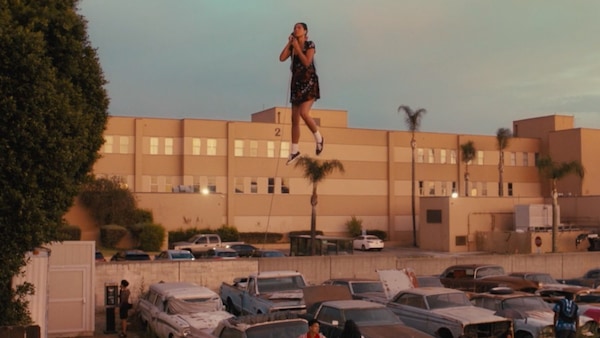
2. In terms of storytelling, art and tech make an interesting combination. Is it the new formula for churning out compelling narratives that will interest people from all age groups?
I feel like art and tech are definitely very entwined. They go hand in hand. And I think in technology, it’s always like, what’s the next big thing and how can people become more engaged? Currently we’re looking at technology, like virtual reality (VR) and augmented reality (AR), and now the Metaverse. It’s all about how the audience can become more immersed, and how we can deliver an even more powerful experience to the audience.
Having said that, I do think that traditional storytelling is still just as important, because those techniques are really like the foundation that filmmaking is built on, and you still need to have a very cohesive story for the technology to make a difference. We do see projects that don’t have that much technology doing just as well.
My projects, like Dahmer and Home Economics [a television sitcom created by Michael Colton and John Aboud, currently streaming on Amazon Prime Video], are not at the forefront of technology, but they’re powerful storytelling. And so they stick with the traditional techniques and they still deliver really, really powerful stories. But then you look at new projects, like Avatar: The Way of Water [James Cameron-directed epic science fiction film], and you really see how they’re pushing the forefront of technology and cinema in the traditional sense - such as in camera frame rate - and you can see how cinema is just getting better and better with technology.
Even with the new Netflix TV show Kaleidoscope [heist drama television miniseries created by Eric Garcia], they’re experimenting with just different forms of storytelling. So, it’s kind of like a buy-your-own-experience, where you can pick the order of the episodes. And so it’s not linear storytelling anymore. It’s whatever the audience decides the order to be. So, I think definitely, it’s changing and it’s making it an experience that people want to have. In a way, it is a guaranteed success because with every new thing, people want to know, right? What’s the new thing? How is it? And so you do attract viewers.
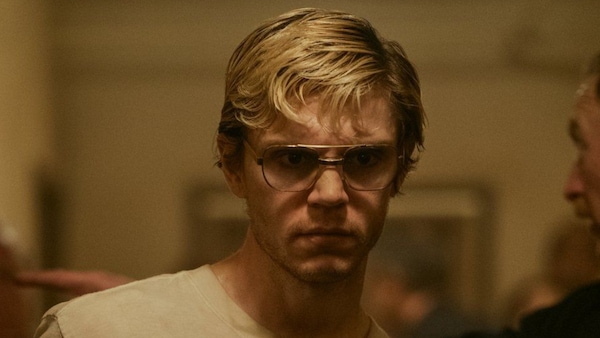
3. Your take on OTT driving the change in the way films and shows are now consumed across age groups. Do you see it as a boon or a bane?
A boon, of course. I mean, in the context of just the Indian market, I think OTT has brought so much good and diverse content from inside the country as well as abroad. So you’re seeing people watching Korean dramas now, as well as films and shows from Thailand, Thailand, Germany and, of course, America. There’s just like this wide range of content available, and so easily accessible that you’re really seeing people diversify their taste and watch different things that traditionally India never really had access to. You only really had the blockbuster Hollywood films, and then you had Bollywood.
When I am in Mumbai, so sometimes we saw a little bit of Tollywood, but I didn’t even see that much of that in cinemas. And then, of course, you had the individual Indian network television content, which, again, mostly was like a drama-comedy kind of romance, but very censored. And now you’re seeing content that isn’t censored. It can be more violent or have more graphic content, but it also talks about subjects that potentially are not very mainstream, but is given a platform.
And for filmmakers, I think it allows this opportunity, where so many more people are able to work, they’re able to write stories, create stories and share stories on a platform that traditionally so few people have access to. Because you know how many people make Bollywood movies? It’s a small group of people, who really make those films.
And so I think OTT is a definite boon, in the sense that it’s allowed so many people to make different content. And then in terms of viewership, I think a lot of what we’re even seeing in in cinema with people boycotting films and all the things that are going on is in part because of OTT, because people are seeing this different kind of content and they’re just like, we want something new from Bollywood, too. They’re raising their expectations from filmmakers in general, because they have access to such a wide range and great quality content now.
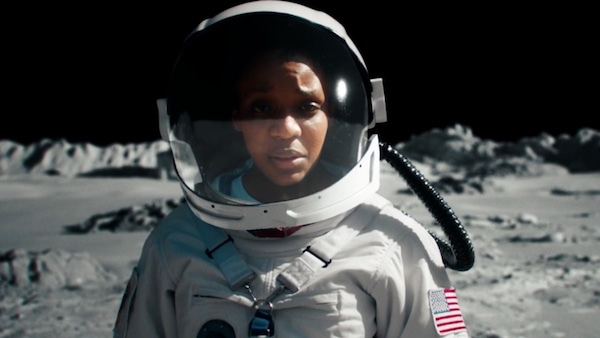
4. Your views on short-format projects. Do you think short films can also drive home the message or make an impact as much as a feature film?
Definitely. Short format has been around for a really long time. It’s just been this part of cinema that the audience traditionally never sees. Short films have, as you said, always been great for experimentation. It allows a lot of filmmakers to make content and make their work known and get experience without the expectations and the money that come with a large format film or TV series. And it also allows for a wider range of storytelling to be made.
Traditionally, short films were really only made for a director showreel or an actor showreel, just for them to have work. But now we’re seeing that it’s changing today’s world. There’s just like, never enough content, right? So, as our consumption of media is changing, short format films suddenly are accessible to people because they want something to watch on their phones, while they’re commuting or during their lunch break. And so, it offers a very complete, cohesive storytelling experience in a short period of time without the time commitment of a full series or movie. Short format projects, in say 10 to 20 minutes, can deliver a perfect story.
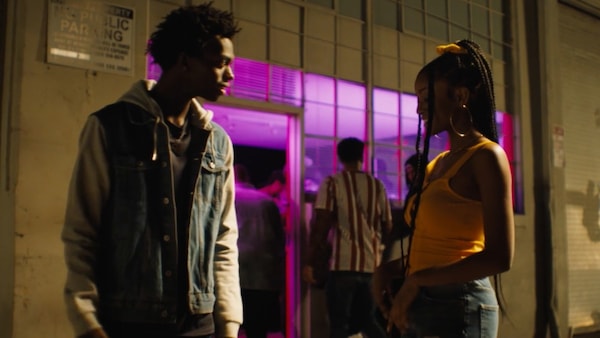
And it’s a quick storytelling experience, but it can be really effective, I think. And in terms of the social message, films like We Were Meant To, which runs for 24 minutes, is very cohesive and hits all the right notes. You can see the beginning, middle and end of the story. And I think one of the things that makes it more effective is that you’re in the moment with the character. You see the whole story in one sitting, right? It’s not like a TV show or cinema where you’re going to wake, get up, go get popcorn, go for a bathroom break, or even, like a TV series where you want to watch the next episode tomorrow. And so you have to remember what you left behind. It’s a quick experience that people can just watch in one sitting, and it still delivers the message. So, I think short formats are a really great way for filmmakers to make content and make their work known and get experience without all of the problems that long formats can bring.
5. Your future projects…
I have a TV show that’s coming out March 10, on Hulu Disney. It’s called Unprisoned. This project is really interesting because it is a comedy, but it talks about the journey of a father and daughter after the father gets out of prison. And I feel like that’s something that we never talk about, right? Life after prison and what that looks like, what kind of assimilation is for somebody. And looking at it, it’s supposed to be a comedy but, of course, there’s a lot of emotions and tragedy that go behind it, because it’s a father reuniting with his daughter.
Then, I’m looking forward to Dahmer, which has been picked up for two more seasons. Currently, I’m also going to be working in India with a production house, developing a new OTT series with them.
I’m also going to be working in India with a production house, and developing a new OTT series with them. It’s still in the writing stage, and doesn’t have a name yet. But I’m excited to get into the development process with them.
